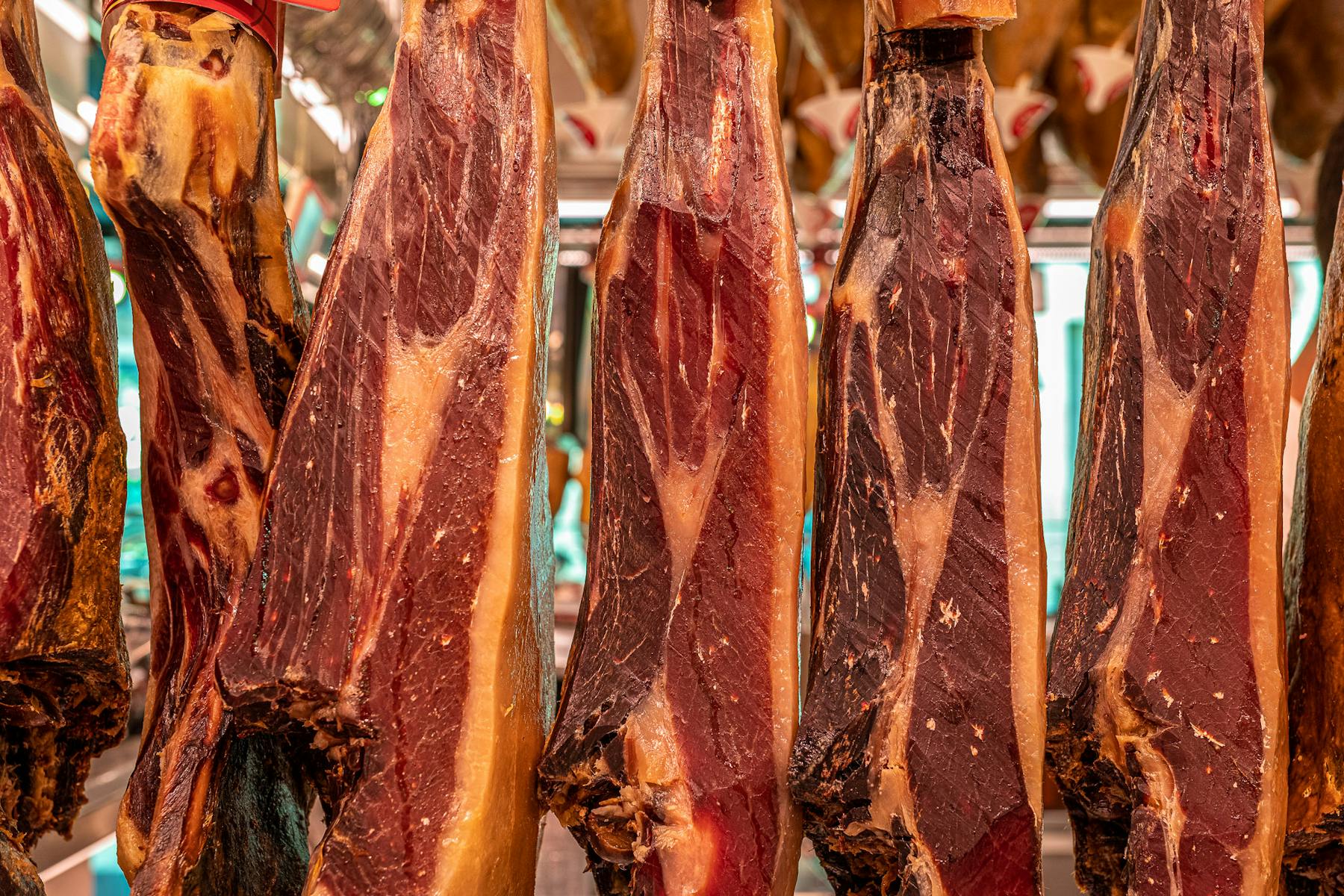
Jamón: Spain’s Sweet, Nutty Cured Meat
On Southwest Spain's Prized Pigs
Jamón: Spain’s Sweet, Nutty Cured Meat
Italians have prosciutto, Americans love bacon, and the French are famous for pâté, but the Spanish have a special relationship with pigs. Ever since the Roman times, artisans on the Iberian peninsula have been curing their legs, creating the sweet, nutty meat known in Spanish as jamón (jambon in French and ham in English have the same Greek root for “leg”). Ask any Spaniard: jamón is undeniably the king of cured meats, and the place for the best jamón in the world is the west and southwest of the country, where the primordial forests of the Iberian dehesa provide the ideal environment for hungry, growing pigs.
"Ask any Spaniard: jamón is undeniably the king of cured meats"
There are a few types of jamón, based on the breed of pig, its diet, and how long its meat has been cured. Entry-level jamón, jamón serrano, comes from cerdos blancos, or white pigs. Jamón serrano was originally made by farmers in the mountains, where cool winters provided the perfect environment for jamón’s two other ingredients – salt and time – to perform their magic. Now, jamón serrano is made in large facilities, where it is salted and cured for a year before it is sold. Jamón serrano is a great choice for recipes calling for jamón, including topping pan con tomate, folding into croquetas, or tucking into a flauta with sliced manchego and some extra virgin olive oil.
Fancier jamóns come from the iconic cerdos ibéricos, Iberian pigs, better known as pata negra – black foot. These pigs, descended from wild boars, thrive in the dehesa of Extramadura in southwestern Spain. This idyllic landscape is filled with ancient oak trees which scatter antioxidant-rich acorns across the meadows. These acorns are the best sustenance pigs can imagine - and the free-roaming patas negras can eat up to ¡20 pounds of them every day! through the fall and winter. Pigs who have grown up and been fattened on acorns make the very best jamón, known as jamón Iberico de bellota – ‘bellota’ means acorn. These jamóns, which are aged for years, are beautiful and complex, with a sweet, nutty savoriness and meltingly rich fat. They are best enjoyed thinly sliced (by hand, if possible) alongside a glass of dry Manzanilla sherry.
Interestingly, American law made import of Spanish jamón Ibérico illegal until 2008, when a few outspoken activists – including Chef José Andrés – lobbied to bring it into the country. José worked closely with Santiago Martin, President and CEO of Embutidos Fermín, based in Salamanca. On the momentous occasion, José noted that “Ibérico ham is the best culinary ambassador Spain can have.”
Besides Fermín, one of the best brands available in the United States is Cinco Jotas, both of which are available at the Jamón y Queso Kiosk at Mercado Little Spain, as well as on our online shop.
(photo © Joseph Weaver Photography)





